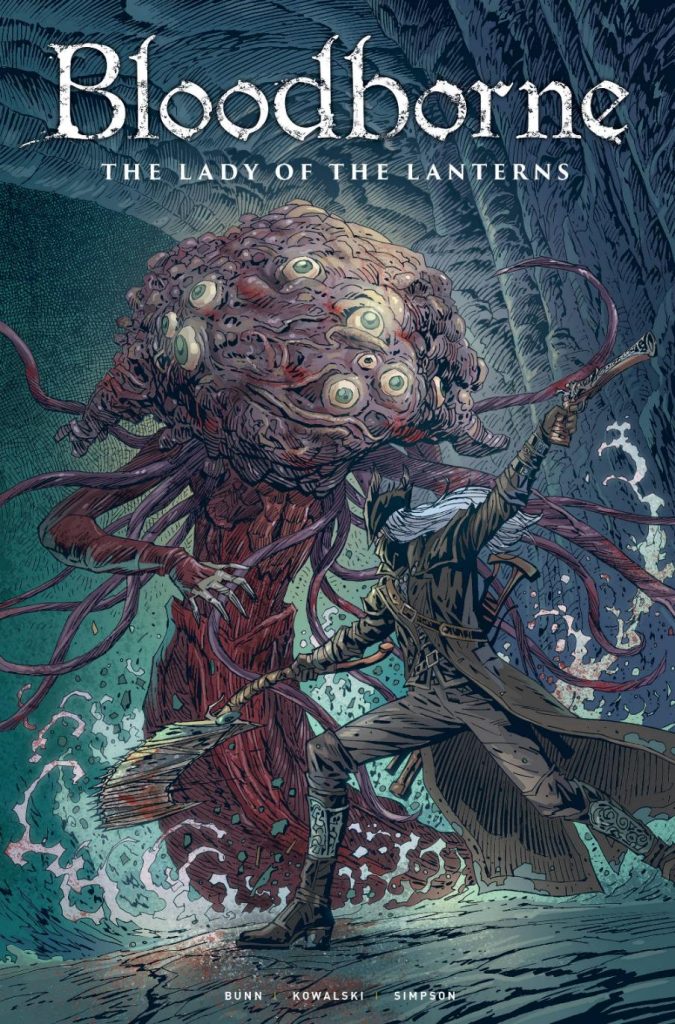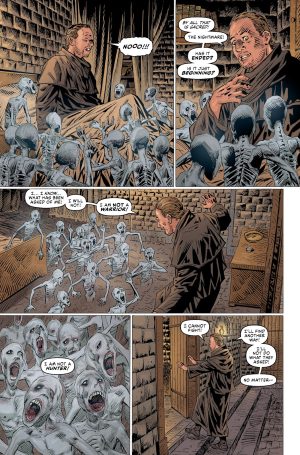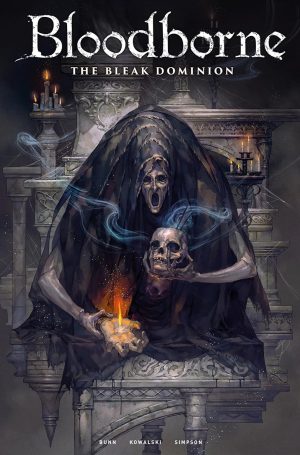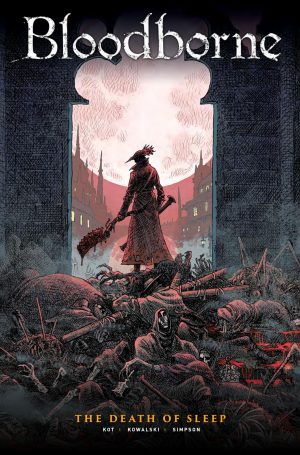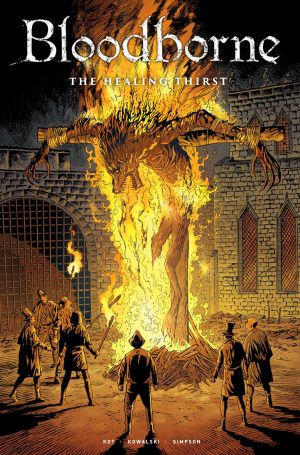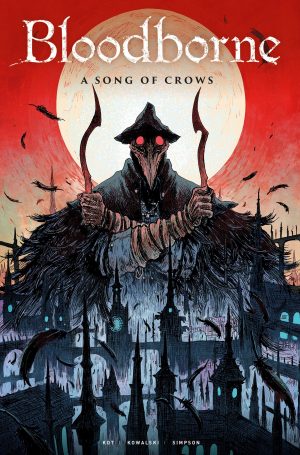Review by Ian Keogh
With The Lady of the Lanterns Cullen Bunn takes over the extrapolations of the spooky, rundown ancient city of Yharnam in which some residents are transformed into monsters, their destruction assured by Hunters. Thankfully skilled and atmospheric artist Piotr Kowalski has been retained.
Given his track record, Bunn knows his way around a spooky horror scenario, and takes a greatly more traditional approach to it than was seen in earlier volumes, establishing threat, victims and Hunter before setting the story loose. It’s far more effective than the often discursive and oblique writing of Aleš Kot, last seen in The Veil, Torn Asunder. A simple improvement is Bunn naming his characters, which instantly induces a greater sympathy. Five separate stories show different people hearing the siren call of the Lady of the Lanterns, her voice driving monsters to a frenzy, and even the well-intentioned are lured into danger.
Kowalski has nothing to prove when it comes to presenting the decayed stature of Yharnam, and continues to stun with every page. There seems no weakness to his art. His locations are fulsome, his people are distinctive, and equally at home whether static or moving, the page compositions are glorious, and Kowalski can deliver street conversations with as much style as the horrors of the night. Art fans are going to be captivated from the start.
It appears at first that Bunn’s intention is to produce separate spotlights for each chapter, but the stories converge until there’s a band of Hunters sworn to deal with the Lady of the Lanterns once and for all. A clever aspect is how the Lady is initially only heard, not seen, earning her name through her song, and how she defies expectation when eventually revealed. At the end of the story two characters remain in focus, and Bunn obviously has plans for their future.
An injection of accessibility to this exceptionally well drawn horror is extremely welcome, and the creative team continue with The Bleak Dominion.
